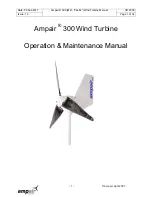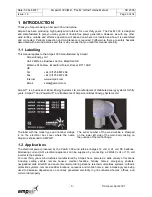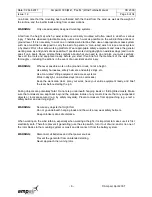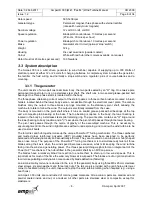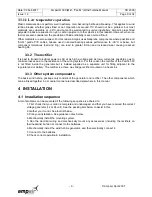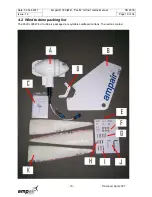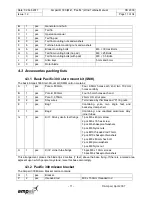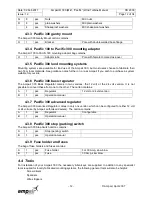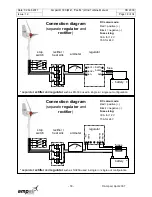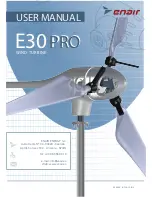
Date: 02 Feb 2011
Ampair ® 300 (Mk1, “Pacific”) Wind Turbine Manual
CD 2300
Issue: 1.2
Page 3 of 34
- 3 -
© Ampair, April 2007
1 INTRODUCTION
Thank you for purchasing an Ampair 300 wind turbine.
Ampair has been producing high quality wind turbines for over thirty years. The Pacific 300 is designed
and manufactured to give you many years of trouble free power generation. However, as with any other
wind turbine, reliable and effective operation will depend on where it is located and how it is assembled
and connected. Periodic inspection and maintenance is required. Furthermore there are safety hazards
associated with all wind turbines and this is why we ask that you read this manual carefully.
1.1 Labelling
This manual applies to the Ampair 300 manufactured by Ampair.
Ampair Energy Ltd
Unit 2 Milborne Business Centre, Blandford Hill
Milborne St Andrew, BLandford Forum, Dorset, DT11 0HZ
UK
Tel.
+44 (0)1258 837 266
Fax.
+44 (0)1258 837 496
Internet
www.ampair.com
Ampair™ is a
business of Boost Energy Systems Ltd, manufacturers of distributed energy systems for fifty
years.
Ampair™ and PowerFurl™ are trademarks of Ampair and Boost Energy Systems Ltd.
The label with the model type and nominal voltage
is on the electrical box cover where the name
Ampair is shortened to AMPAIR.
The serial number of the wind turbine is stamped
on the lower left side of the main body casting on
the outside of the tail fin flange.
1.2 Applications
The electrical power produced by the Pacific 300 wind turbine charges 12 volt or 24 volt DC batteries.
Alternating current (AC) electrical appliances can be supplied by connecting a 220/240 volt or 110 volt
inverter to the batteries.
For over thirty years wind turbines manufactured by Ampair have powered a wide variety of locations
including sailing yachts; remote houses; medical facilities; holiday homes; emergency shelters;
navigational aids; scientific and environmental monitoring stations; telecommunications systems; cathodic
protection systems; remote industrial locations; caravans and mobile homes; and increasingly are being
used to decrease dependence on centrally generated electricity in grid-connected homes, offices, and
commercial property.

